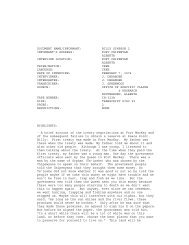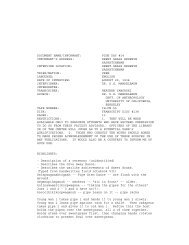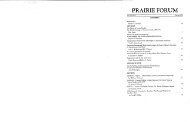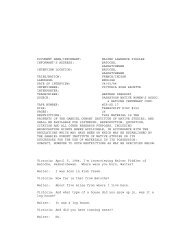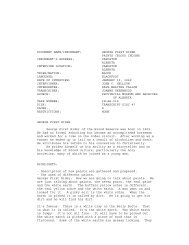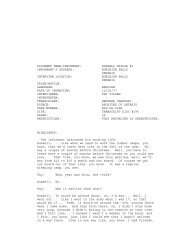Contents of It's not All in Your Head by Asmundson and Taylor
Contents of It's not All in Your Head by Asmundson and Taylor
Contents of It's not All in Your Head by Asmundson and Taylor
Create successful ePaper yourself
Turn your PDF publications into a flip-book with our unique Google optimized e-Paper software.
� Do you carry th<strong>in</strong>gs to use <strong>in</strong> the event <strong>of</strong> a medical emergency, such as a cell<br />
phone, a Medic Alert bracelet, or phone numbers <strong>and</strong> addresses <strong>of</strong> local hospitals?<br />
(p. 98).<br />
The Charlson Comorbidity Questionnaire (CCQ; Katz, Chang, Sangha, Fossel, &<br />
Bates, 1996) is an 11-item <strong>in</strong>terview measure <strong>of</strong> comorbid medical conditions that was<br />
used to provide an assessment <strong>of</strong> participants‘ current medical health status. The CCQ is<br />
based on the widely validated <strong>and</strong> popular Charlson Comorbidity Index (CCI; Charlson,<br />
Pompei, Ales, & MacKenzie, 1987), a medical chart review-based comorbidity<br />
<strong>in</strong>strument. The CCI was developed as a predictor <strong>of</strong> 1-year mortality. A sample item<br />
from the CCQ is, ―Have you had a stroke, cerebrovascular accident, blood clot or<br />
bleed<strong>in</strong>g <strong>in</strong> the bra<strong>in</strong>, or transient ischemic attack (TIA)?‖ (p. 83). A mean comorbidity<br />
score is calculated based on the scores on each item. Test-retest reliability is good (r =<br />
.73), construct validity (correlation with the CCI) is adequate (r = .63). The follow<strong>in</strong>g<br />
question was added to assess medication usage: ―What if any medications are you<br />
currently tak<strong>in</strong>g?‖<br />
The Structured Cl<strong>in</strong>ical Interview for DSM-IV Axis I Disorders: Cl<strong>in</strong>ician<br />
Version Screen Patient Questionnaire (SSPQ; First, Gibbon, Williams, & Spitzer, 1999)<br />
is a 76-item, computerized, self-report, diagnostic screen<strong>in</strong>g <strong>in</strong>strument constructed <strong>in</strong> an<br />
adaptive test<strong>in</strong>g format. It is a questionnaire based on the cl<strong>in</strong>ical version <strong>of</strong> the<br />
Structured Cl<strong>in</strong>ical Interview for DSM-IV (SCID) for Axis I Disorders (First, Spitzer,<br />
34



